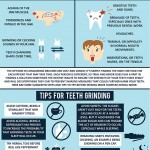9 Action Steps to Keeping Your Healthy Smile Resolution on Track in 2016
With a shiny new year just around the corner and resolutions to be made, now would be a great time to consider your oral health. How do you feel about the way you cared for your oral cavity? Did you have a lot of problems with your teeth or gums? Do you wish your smile was whiter or straighter? Were you content with your care or would you like to make a change? Asking yourself questions like these can get you on the right track for the healthiest smile you’ve had yet in the coming year. Once you’ve committed to this as part of your resolutions for 2016, you’ll need action steps to help you fulfill it. Let’s take a look at nine ways that you can make sure to stick to the resolution and keep it this time.
Make a Plan
This may not work for everyone but studies show a little planning can make for a great year. Just as plain water simmers away, vague resolutions will get the dreamer nowhere fast. A study done by NCBI (National Center of Biotechnology) took this concept and applied it to the traditional exercise New Year’s plan. Lead psychologist Fiona Jones and her team found that the more modest a person’s expectations and set goals are more likely to reach them. Likewise, if you want to keep your oral health in top shape, make a plan and take small steps to accomplish them with the expectation of a great report at your second or end of year dental exam or three shades whiter smile. Small goals and small steps will aid you to a well-accomplished goal.
Invest In Dental Insurance
Not only will dental insurance help cover prevention and diagnostics for your dental resolution, but psychological studies such as one done by the Harvard Business Review on consumption find that consumers are more likely to use something they are continually paying for. The same applies for insurance. If you are on a monthly plan, you’ll be more likely to utilize the benefits to your teeth’s advantage. This means if you pay the average $30-$50 each month, you’re being reminded of the cost of your resolution. This reminder works to your advantage and will help you in your goals, as well as get your teeth a couple of exams, cleanings, x-rays if they’re needed, and fluoride treatments to keep your teeth healthy and strong.
Not sure which plan to invest in? Here’s a quick look at three typical options:
The HMO, or health maintenance organization, choice limits coverage to dental professionals within a limited network. The most sought after PPO (preferred provider organization) policies also have a limited network like the HMO, but allow for dental patients to see a dentist outside of it. The cost may be more than an HMO discounted dentist in the network, but people often prefer a dentist they know and trust despite their insurance plan. Nearly 70% of dental insurance plans in effect as of 2014 are PPO plans.
“That’s the advantage of any plan with a network — there’s a negotiated discount,” says Evelyn Ireland, executive director of the National Association of Dental Plans, or NADP. “You’re paying based on the discounted rate. The doctor can’t bill you for the difference.” (Source: bankrate.com)
Lastly, the indemnity plan is an option for patients to see anyone they wish and the insurance just covers a certain percentage of the work done.
Schedule that First visit and Get There
To get the ball rolling, you’ll need to take the biggest, and often scariest for those with dental phobia, step. By committing to the first visit, not only will you give your teeth the healthy cleaning they need, but you’ll also lessen your chances of brushing off the next visit.
Cut Back on Sugar & Alcohol
We all know that sugar and other foods that easily break down into their various forms are what feed the bacteria in our mouths and eventually create plaque, cavities, and worse. So it only makes sense that in order to keep our mouths healthy, we need to cut back on them. Remember the make a plan section ahead? This is a great place to utilize that advice. Don’t just tell yourself to cut back, give yourself specific goals such as “I’ll only have two glasses of wine each week” or “I’ll have one of my favorite candies each month.” By giving yourself goals, you’ll hold yourself accountable. The other side of this action step is to not beat yourself up when you slip up and indulge. Just reiterate your goals, and try again. Sugar and alcohol create pleasure pathways in our brains and it can take time to “reprogram” those habits.
Floss Until It’s A Habit
This is one of the most important changes you need to place in your goals. Flossing is the most neglected and effective form of oral cleaning because of the time it takes. However, its costs are low in comparison to the treatment of gingivitis, gum disease and a whole horde of other problems for teeth and gums if it’s not done. If you don’t currently floss much, use incremental increased to get up to the once daily recommended use for floss. Start with three times a week. As you see and feel the difference in your mouth, you’ll find that it’s a great habit to have. Then work it more and more into your schedule or keep floss handy in places like your living room so you can floss as you do other things like watching TV. Consider investing in flossers to make it easier. Keep at it until you’re flossing daily. Then stick to the routine for a healthier smile.
Kick Nicotine’s Butts
Smoking works against your mouth in so many ways, including bad breath, tooth discoloration, inflammation of gums and salivary glands, increased plaque and tartar build up, jaw bone loss, and increased risk of leukoplakia, gum disease, tooth loss, and oral cancer. It can also delay healing for dental treatments. Quitting tobacco is a common resolution that may seem impossible, but by incrementally reducing your intake and seeking medical or dental assistance, you can overcome the addition.
Gulp More Water
Dehydration is a serious epidemic in America, with over 75% of us chronically suffering from it. A lack of water in the body’s cells can lead to a lot of health issues, and many of them are directly related to the oral cavity. Without hydration, saliva and its antiseptic and cleaning abilities working properly, the mouth’s environment becomes prone to bacteria and plaque. Additionally, gums and other oral tissues are more easily inflamed and collect the plaque. Drinking water also helps with cleaning out food particles and keeping breathe fresh. Creating a healthy drinking habit begins with replacing typical drinks with a clear glass of H2O. You can also add a glass at certain times of your day: when you wake up, after a shower, or right before bed. Spacing out the drinks tends to make it less of a burden, and keeps your hydration levels steady.
Consume Better-for-Your-Teeth Foods
Avoiding sugary or highly processed foods that tend to break down and create plaque in our mouths is a great goal, but replacing it with foods that help clean and protect teeth will make it more manageable. Fruits and vegetables with high fiber and calcium content work like nature’s toothbrushes, scrubbing away plaque on your chompers and freshening breath. Apples and broccoli are two great examples. Drinking or eating high calcium foods can also aid in strengthening jaw bones and teeth structures, and cheese is especially good at reducing oral acid that aids in the breakdown of foods into plaque.
Ask a Friend to be Your Dental Accountability Partner
Perhaps the most important part of your dental resolution plans is an accountability partner. Having a designated reminder in the form of a person you know and trust can be the difference between failing and succeeding. Have a set schedule or time that that person will check in with you. Not only will the reminder help you remember, but it’s been shown that if a “deadline” of the looming interrogation tends to encourage people to do it when they just don’t feel like it. It’s also a great way to stay connected to a friend and help them with their 2016 goals too!



